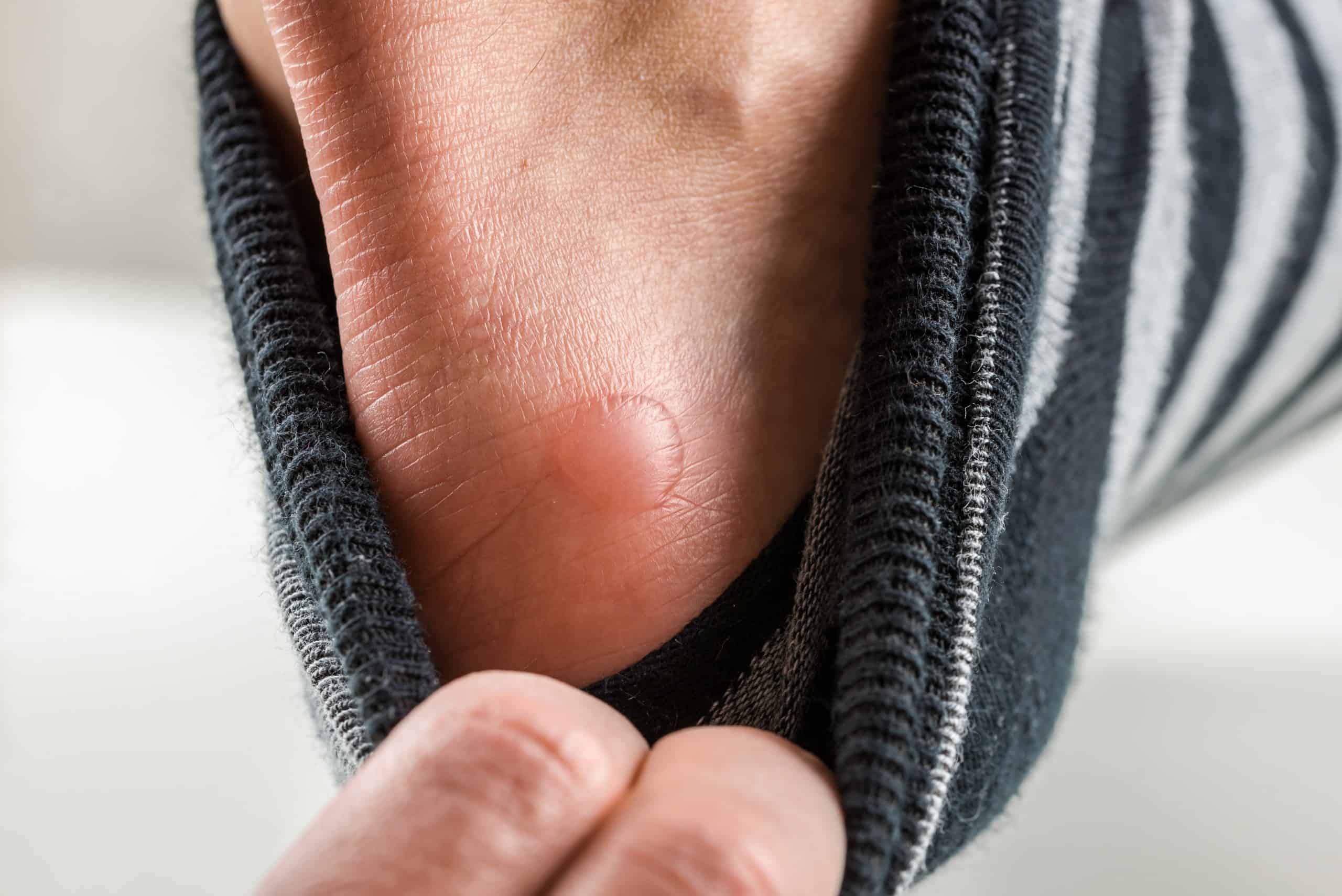Whether you’re a professional runner or someone who goes on jogs for exercise, your feet are prone to a lot of friction daily. As a result, fluids might gather between layers of skin, which will lead to the formation of a blister to protect your feet from further harm.
Yet, blisters can sometimes appear under calluses. Unfortunately, these tend to be especially tough to get rid of because they’re surrounded by a rough layer of skin. So, is there a way to relieve a blister under callus?
Thankfully, the answer is yes!
In this article, we’ll walk you through the process of treating those blisters, let you know how to prevent this in the first place, and answer a few questions you might be having.
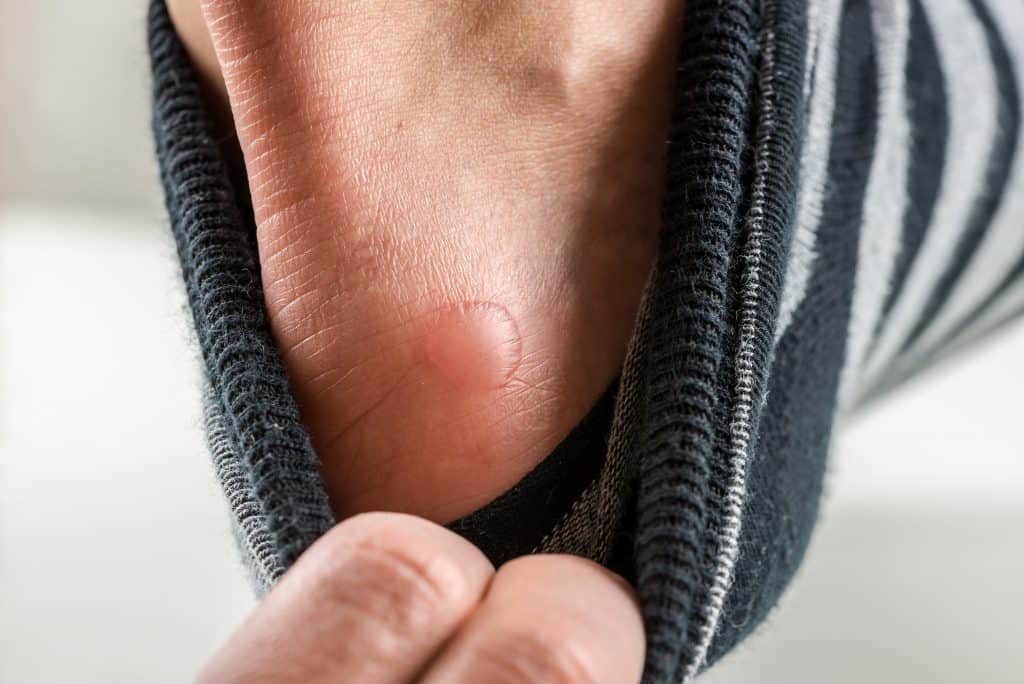
How to Relieve Your Blister If It Forms Underneath a Callus
The first thing you should know is that, in some cases, it’s not recommended to pop a blister on your own. If the bubble is under several layers of thickened skin, you should probably visit a podiatrist so that they could treat it as they see fit.
Otherwise, trying to go through a callus at home might be painful. Let’s not forget that it could expose the skin to infections that could hurt your foot.
Still, you may notice that the blister isn’t buried that deep, so you could try to treat it yourself as long as you keep the area clean. Here are the steps you should follow to achieve that goal.
Step 1: Ensure You Haven’t Confused It for Another Skin Condition
Because your feet go through so much friction every day as a runner, you’re prone to other foot problems besides blisters and calluses. These conditions can sometimes have the same symptoms:
- Rough and dry skin
- Redness or irritation of the feet
- Foot pain after continuous friction
As a result, it can be easy to confuse different types of corns or advanced cases of athlete’s foot with a blister under a callus. To make sure you’ve got the right diagnosis, inspect the affected area closely or contact a doctor.
Step 2: Work Your Way Through the Rough Skin Slowly
When we say slowly, we mean over the course of a few days. See, going through the callus to reach the blister can be painful, especially since the bubble of clear fluid is already vulnerable. Therefore, your best bet is to use the help of your friend, salicylic acid.
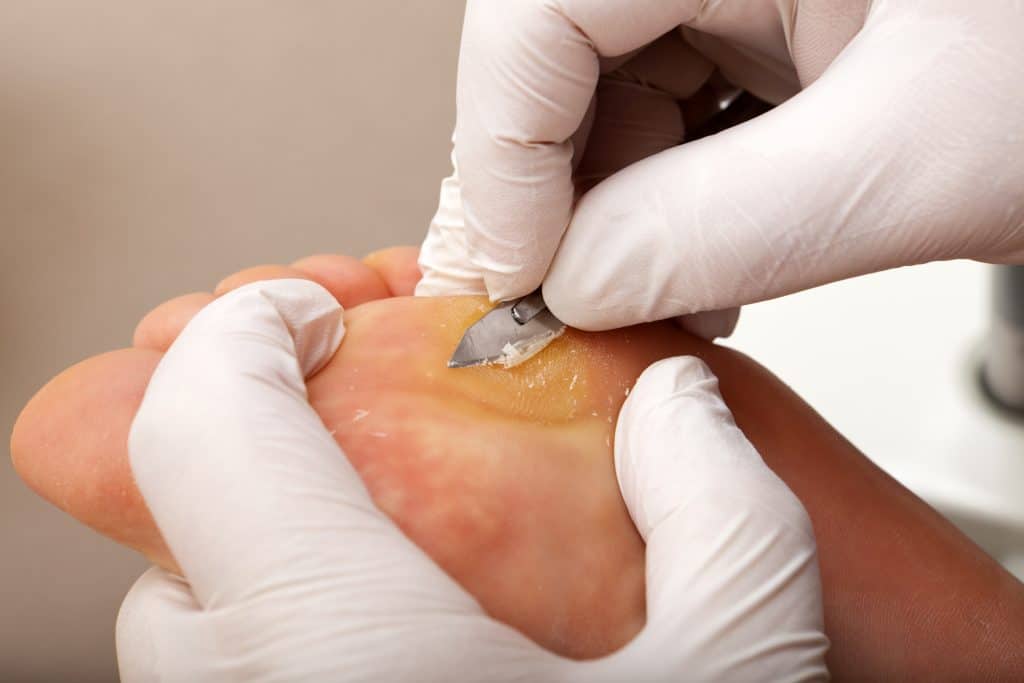
Thankfully, this gem is available in several over-the-counter products. However, it’s always a better idea to use it under medical supervision. Salicylic acid should work its charm in only a few days.
Step 3: Keep the Area Around the Blister Clean While You Wait
As the ointment goes through layer after layer of skin, exposure to bacteria and germs becomes higher. You’ll need to keep your foot clean to prevent the blister from catching infections, which may cause nerve damage.
You won’t need to do anything special to keep your foot protected. Just make sure to wash it with soap and water, then pat it dry with a soft towel. Do this on a daily basis until the thick layers of the callus wear off.
Step 4: Drain the Blister
Now that the rough skin is finally gone, you could go about draining the blister to get rid of the associated pain. Bear in mind that this is not recommended if you notice that it’s a blood blister. If this is the case, don’t hesitate to seek medical help.
If the blister is filled with clear fluid, it’s time to grab a pair of sterilized scissors to pop it. Also, make sure to use disinfectant on the surrounding area, too, and wear sterile gloves while you’re down to business.
When you’re done, wash your hands to be extra safe.
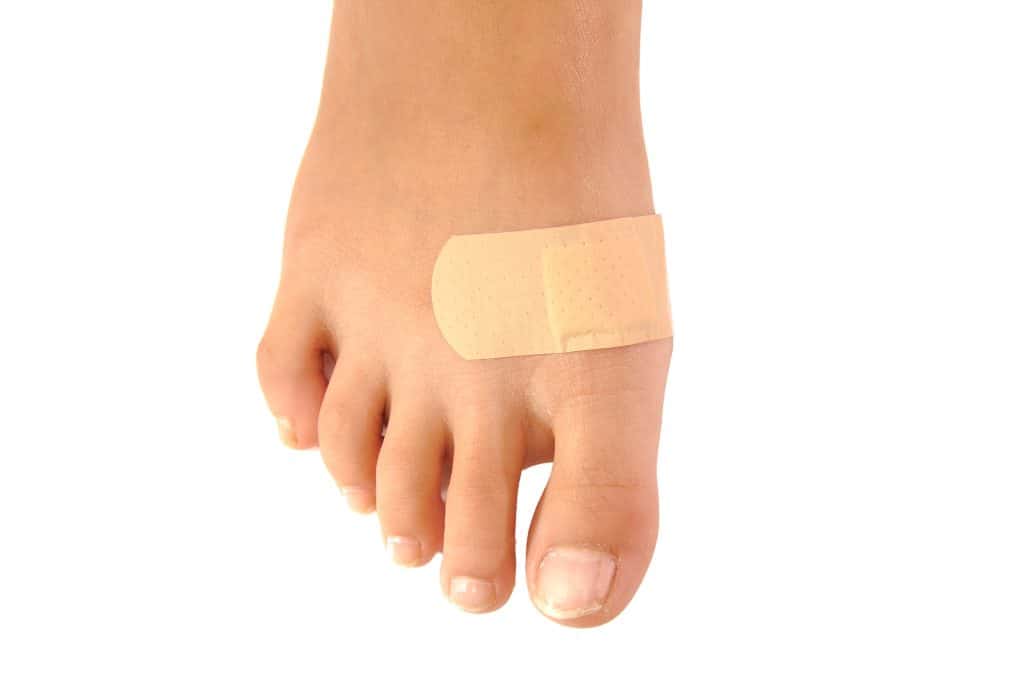
Step 5: Cover Up the Blister
To help the blister heal faster and leave no room for infection or inflammation, you must keep the area clean and protected. Simply enough, apply a thin layer of antibacterial ointment on the area, then use a moleskin blister patch.
Keep in mind that some friction blisters can be rather big. In that case, your best bet is to wrap the large blister with a piece of gauze and use some tape to fix it into place.
Maintain a routine of cleaning and covering the affected area day after day until the blister heals. And, if you’ll be wearing any socks, make sure to change those as soon as they become sweaty.
Now, you could go back to your normal running schedule or even participate in a marathon if you’re ready to!
How Do Calluses Form?
Getting rid of a callus should keep blisters from growing underneath, but how do calluses form in the first place? It all comes down to friction.
When something rubs against the skin without too much pressure and over a long period of time, the skin becomes thicker to keep damage at bay. This is simply how a callus can find its way to a runner’s feet.
While you practice, a certain spot on your foot may face excessive friction with a part of your shoe, which may lead to the formation of harder skin. This is why your footwear must hug the shape of your feet seamlessly.
Sometimes, bunions can cause calluses, too, because they create automatic pressure points.
How to File a Callus Before a Blister Forms Under It?
The best way to solve this problem is to exfoliate the affected area with a pumice stone. Also, you could use emery paper to gently remove the callus to keep the skin from getting even harder.
No matter which method you go for, remember to always use moisturizing cream on the callus when you’re done. It can help the skin restore its former glory, becoming smoother in a few days.
How Do Blisters Form?
Blisters are bubbles that contain clear liquid. Those appear on the skin all of a sudden after facing an intense amount of friction. Usually, a foot blister tends to be painful and inflamed, unlike a callus.
When you run a marathon, the chances of developing blisters afterward can be high thanks to the extreme pressure on your feet.
During the race, the skin will try to protect itself, so the outer layer and inner layer of your skin might separate. As a result, some transparent fluid will get between these layers.
Typically, if the blister doesn’t form underneath a hard callus, it can go on its own in a couple of days or so. The foot pain may be really annoying in the beginning, but it should ease off as the blister heals.
To speed up the healing process, make sure to clean the area around the blister, keep it dry, and cover it. And, while you might be tempted to pop it, it’s best if you wait for the bubble to deflate naturally to ward off infection.
How to Prevent Blisters from Forming Under Calluses in the Future?
For someone who deals with friction on a daily basis, you must learn how to minimize the chances of developing blisters under calluses.
The following guidelines could push you in the right direction so that nothing could ever hold you back from pursuing your dreams as a runner.
- Make sure your running shoes fit you perfectly to minimize the friction and pressure on different regions of your feet
- Go for a pair of shoes that provides proper ventilation to your feet
- Replace your cotton socks with moisture-wicking ones
- Try not to exercise when the weather is hot to reduce sweat
- Run on flat ground instead of rough terrains or uphill
- Wear gaiters if you must take a rather challenging route
- Don’t concentrate your pressure on certain parts of your feet
- File any calluses as soon as you notice them on your foot
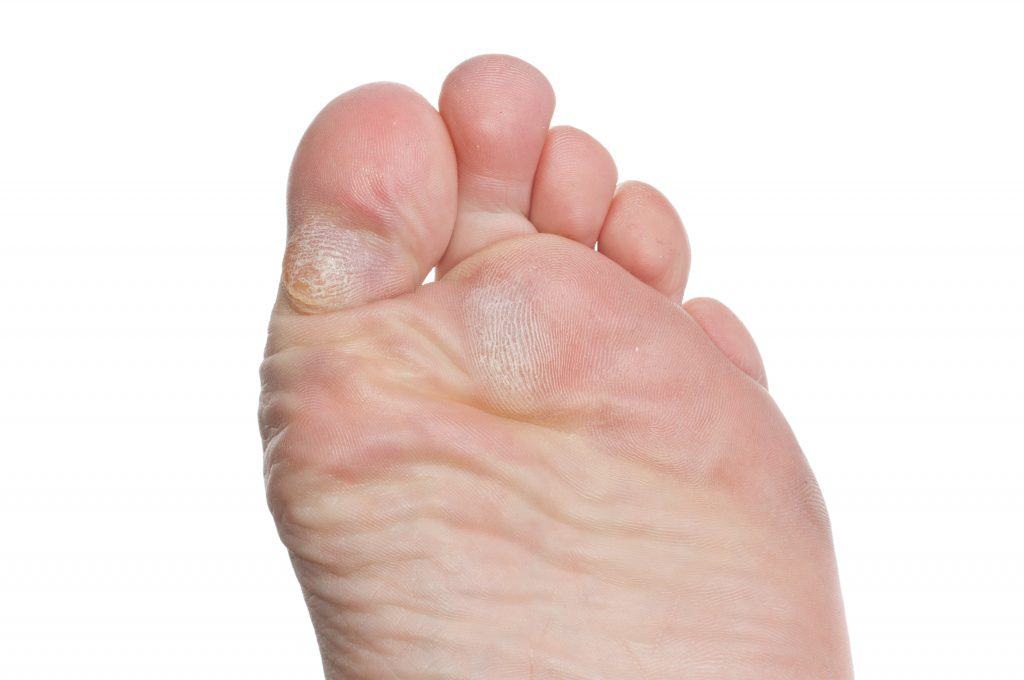
To Wrap It Up
Having a blister under callus is definitely a nuisance, especially if you have an important sports event tomorrow morning. This is why learning how to deal with this complication is a must for all runners.
Hopefully, after reading our article, you now know the right way to take care of annoying friction blisters. Plus, going through our prevention tips and learning just how calluses and blisters take form should help you avoid those foot problems in the future.
Now, are you ready to put on your running shoes and practice to earn your next trophy?

